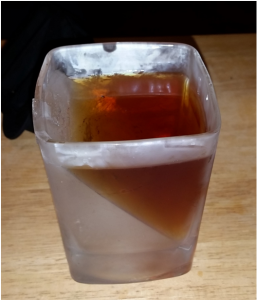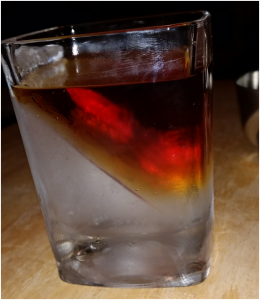“Never had [insert new whiskey], how do I know if I might like it?”
Regardless of where you are in your whiskey journey, we’ve all encountered the conundrum of wondering if we might or might not like a whiskey we haven’t tried yet. Wouldn’t it be amazing to KNOW before we lay down our hard-earned (or however you make it) money?
Spoiler alert – there isn’t a foolproof plan outside actually trying it (and trying it only once isn’t foolproof!) But fear not – there are ways to hedge your bet!
For starters – you need to know what you like, and have some idea of what it is about it you like. Consider the following aspects:
- Do you like that particular style of whiskey? (e.g., bourbon vs rye vs Irish)
- Do you like another similar product from the same distillery? (e.g., Jim Beam, Laphroaig)
- Do you like that type of mashbill – if it is known or disclosed? (e.g., high-rye bourbon vs wheated bourbon)
- If the whiskey is finished or aged in a unique wood, have you enjoyed whiskies in that same wood (e.g., single malt aged in sherry vs bourbon finished in port)
- Do you like that type of whiskey with a similar age? (e.g., Elijah Craig 12 yr vs Elijah Craig 20 yr)
If you are a whisky geek like me, answers to these questions aren’t that simple. Hell it would be easier to detail what I don’t like, although no less important to answering the ultimate question.
Here’s a recent example to try to illustrate the process I go through. Old Overholt Bonded Straight Rye Whiskey is a new product I haven’t had (yet), but saw it on a shelf for $25. Before just grabbing it – I considered what I know about my own likes/dislikes.
Q: Do I like rye whiskey?
A: Abosfreakinglutely.
That’s a good start. If I didn’t like rye, I could probably stop right here (which doesn’t mean I wouldn’t like it, but chances are if I don’t like a category, I’m less likely to like any random product within it).
Q: Do I like similar products from Jim Beam?
A: Yes and no.
This is where it gets more challenging. Beam makes several rye whiskies (Jim Beam Rye, Old Overholt, Knob Creek Rye, and (ri)1 Straight Rye). I like Knob Creek Rye, but not the others. In fact, Old Overholt and (ri)1 are two that I flat out dislike.
Knowing I don’t like the standard Old Overholt, why bother considering this new variation? We’ll get to that shortly.
Q: Do I like this type of mashbill?
A: Yes, but . . .
Beam doesn’t disclose their mashbill, but based on information from several reliable sources – all of their rye whiskey is distilled from the same mashbill of 51% rye. Sometimes these are referred to as “barely legal” ryes. A rye with a similar mashbill that I really enjoy is Rittenhouse Bottled-in-Bond. Granted, that’s a different distiller – and since I’ve tried Beam’s mashbill in similar products, that’s more important. Why think about mashbill? In other scenarios, maybe I’ve never tried anything from that distiller (but if they disclose the mashbill, that provides at least some insight). I’ll tell you right now – if I read that Four Roses were offering a straight rye whiskey, if it weren’t ridiculously priced – that’d be an auto-purchase for me; despite never having had that mashbill from them.
Q: Is the whiskey finished/aged in unique wood?
A: Nope.
But as a “straight rye” I know it was aged in new, charred oak. This question is more likely to come up with scotch, although cask finishes for bourbon and rye have become more popular in recent years.
Q: Do I like rye whiskey of a similar age?
A: Yep.
As a “bonded” straight whiskey, I know it is at least 4 years old (and likely not more or they’d take advantage of that and advertise it on the label). The “bonded” also tells me that it is at least 50% abv (or 100 proof). Do I like that? Hells yeah – Rittenhouse Bottled-in-Bond is one of my standard go-to rye whiskies. I find that rye whiskey develops more character at a young age compared with bourbon or other whiskies (which isn’t to say I wouldn’t love a little more age than 4 years).
This right here is what still has me curious. I like rye whiskey, I generally don’t care for most of Jim Beam’s rye whiskey (although I do like Knob Creek rye), and I really don’t care for Old Overholt standard 3 year old straight rye. But throw another 20 proof points and a year of age in . . . and I’m curious.
Knowing what I know about both what I like and what this product is – can I predict that I’ll enjoy it and not regret the purchase? Unfortunately – nope. At best, I can guess that I might like it. The higher proof and extra year give me some hope, but not caring for most of the other ryes from Beam (and in particular the other with the Old Overholt name on it) gives me pause.
The easiest way is to skip all of the analytical bullsh!t and the simply try it. Why even bother with trying to figure out if you might like something short of simply trying it? I’ll tell ya: there is simply too much whiskey and too little time (not to mention too many miles I’d have to walk to burn it off!) I personally find that the time taken to assess and calculate whether or not I might like something saves me some searching to either buy or try products that ultimately I’m not going to enjoy – not to mention saving me money from buying whole bottles of stuff I won’t enjoy.
Is all of this too much thinking and not enough drinking? Maybe – to each their own. But spending way too much time thinking about whiskey . . . sorta our thing. If laying this out can help one fellow whiskey apostle out there from buying a bottle they later find they wouldn’t have liked, it’s all been worthwhile.
Cheers!
Gary
“Never had [insert new whiskey], how do I know if I might like it?” Read More »






